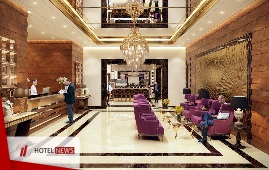
Technique 167 Post Positive Consumer Blog Posts for Employees to See; Employees like to be—and should be—recognized for out- standing guest service. In a section either in the staff lounge or near the time clock where the staff members tend to congre- gate, post all the positive comments including Trip Advisor, Social Media, Guest Survey’s, letters, etc. This will recognize employees who are getting good comments and will motivate other employees to give that extra service so they too can be recognized. Technique 168 Equally Reward Front and Back-of-the-House Employees; A front-of-the-house associate who is mentioned in a positive fashion on Trip Advisor should be given a reward. However, the recipient should be instructed to select a back- of-the-house associate who is worthy of receiving the equiva- lent reward. The front-of-the-house associate should be asked to write 2–3 sentences describing why the back-of-the-house associate is worthy of the reward. This explanation should be posted in the associate break-area (both associates are given an equivalent reward). Technique 169 Establish a Uniform and Appearance Committee; The hotel should have a “uniform and appearance com- mittee” comprised of a cross-section of managers and asso- ciates from across the hotel. The committee addresses issues regarding uniforms around the hotel. For example, should associates in a given department be permitted to wear long underwear tops on their arms in conjunction with a short sleeve uniform shirt or should long-sleeved uniform tops be issued? Knowing that fellow associates have an active voice in uniform policy provides incentive to comply. Technique 170 Conduct Guest Surprise Clinics with Associates; Hold a meeting with associates in which they are shown a PowerPoint slide presentation containing photographs of the various areas of the hotel. As the associates view the photos, they should be instructed to brainstorm ideas by which guests can be surprised in the given areas (A $2 cost limit for each surprise could be the parameter used in this exercise). Asso- ciates have more incentive to carry out surprise tactics if they take part in deriving the tactics. Technique 171 Have Employee Contests for Deriving Guest Surprise Ideas; Hang sketches (these are called service blueprints) of the hotel’s public areas in the associate break room. Associates who can offer the most creative ideas for surprising guests by studying the sketches can win prizes. Technique 172 Explain the Important Role of the Associate to His/Her Family; If an associate’s family members understand how the associate’s role in the hotel serves an important function in providing hospitality, then work-family conflict is reduced. Therefore, at least two times per year, management should plan a family function. During that function, management should explain to those in attendance how each associate’s job is important and how it fits into the functioning of the hotel. Technique 173 “I Love My Job When _____”; In an associate meeting, put the following sentence stem on a PowerPoint slide: “I love my job when _________.” Any associate who volunteers to stand in front of the group and completes the sentence wins a prize. Technique 174 Implement a Housekeeping Scoring Contest; For the housekeeping department, derive a scoring system on the room inspection check sheet. The housekeeper with the highest score across a seven-day period wins either cash or a gift card to a local retail store. Technique 175 Reward Departments for High Guest Satisfaction Scores; All departments should have team rewards such as pizza parties, luncheons, or gift cards when the department’s target guest satisfaction survey scores are met or exceeded.
Create: Aug 11, 2020 Edit: Sep 25, 2020 Hotel Management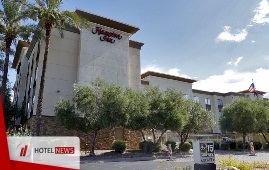
The Associated Press revealed; The US government detains asylum-seeking children in a hotel for an indefinite period of time and then deports them from the United States. According to the evidence, a private contractor has pledged to the US Immigration and Customs Enforcement to transfer the detained asylum-seeking children to three specific hotels.
Create: Jul 25, 2020 Edit: Jul 27, 2020 International News
Technique 112 Host Menu Tastings for Staff; All frontline staff in the hotel should have knowledge of the restaurant menu items. This knowledge is needed in order for them to feel confident in making recommendations and upselling. In this effort, staff should periodically be invited to taste items. Technique 114 Hang a Mirror in the Service Area; Hang a full-length mirror in the expo area of the kitchen so that servers can check their appearance throughout their shift. Technique 115 Identify Congestion Points in the Breakfast Buffet; Due to the sheer number of guests that dine in the hotel for breakfast, it is the most important meal period for the hotel to get right. In a buffet setting, management should routinely observe where guest congestion is prone to occur during the buffet experience. Often, congestion points can be alleviated with better signage, altered buffet layout, and by repositioning certain items. Technique 116 Improve Efficiency at the Made-to-Order Egg Station; Often, the congestion point in the hotel breakfast expe- rience is the made-to-order egg station. Typically, this con- gestion occurs because the chef working the station is not properly trained. The chef should be trained to begin heat- ing the saute pans as s/he sees guests approaching the station. In addition, toppings should be finely diced so that they can saute faster. When no guests are in view of the station, s/he can practice his/her flipping speed and accuracy by using a slice of bread in the pans. S/he should also be well stocked with both egg whites and egg substitutes because the demand for these items is increasing as baby boomers age. A well-trained chef should be able to prepare three orders simultaneously at the station (always keep a fire extinguisher at the station). Technique 117 Improve Efficiency at the Belgian Waffle Station; A common congestion point in the breakfast buffet area is the Belgian waffle station. Substituting the typical waffle irons with irons that can produce four miniature waffles simulta- neously should alleviate some/most of the congestion. Rather than taking a full-sized Belgian waffle (which is too large for most guests who also want to try other foods), the guest can instead take two mini-waffles. Technique 118 Have a To-Go Breakfast Option Available; If a guest requests an early wake-up call or asks to get a cab at a time before the restaurant opens, offer a bagged breakfast that can be made up the night before. Items in the to-go break- fast bag might include a muffin, breakfast bar, apple, bottled water etc. This to-go breakfast does not have to be complimen- tary; this gesture of goodwill goes a long way. Technique 119 Offer Customizable Chef Hats to Children; Rather than standard coloring sheets, the restaurant should instead have paper chef hats for small children that can be colored and decorated. Technique 120 Offer Origami Kits to Children; Rather than standard coloring sheets, the restaurant should instead have origami kits for elementary-aged children. Technique 121 Let Small Children Play with Dough; If the restaurant uses bread, pastry, or pizza dough in any recipes, small children should be offered a small piece of dough on a paper plate that they can play with while waiting for meals. Technique 122 Inscribe Surprise Messages Inside Coffee Cups; The inside of some of the restaurant’s coffee cups can be randomly inscribed with messages such as “We hope that you are enjoying your stay!” Technique 123 Use Strong Language When Greeting Restaurant Guests; Restaurant greeters should never use the word “JUST” when verifying the number of guests in a dining party. If there are “just” 1 or 2 people, the word diminishes the worth of the diners who are present. Welcome all equally. Technique 124 Extend VIP Invitations to Valued Guests; If a local is dining in the restaurant, invite him/her to be a VIP at an upcoming menu tasting or wine tasting. Technique 125 Play Peek-A-Boo; Servers should be trained that one tactic that can be used to bring a smile to a baby’s face is a quick game of peek-a-boo while visiting the table. Technique 126 During busy breakfast periods, often tables cannot be turned because there is a lag in bussing, cleaning, and reset- ting them. Bussers should be staffed heavily, bussers should be compensated well (maybe through a tip pool), associates from other departments should be cross-trained as bussers, and ample supplies should be on hand for table reset. Often, when associates from other departments aid in bussing and reset- ting, they are so poorly cross-trained that their help is ineffi- cient and can even get in the way. Furthermore, the breakfast restaurant supervisor or manager should have a laminated checklist of all table resetting supplies and should check the par levels of all of these items before a shift begins. Technique 127 Have a Children’s Treasure Chest Available; Treat the child guest with a treasure chest of toys. The hotel does not have to spend a lot of money on the toys; they can be from the dollar store or similar. Let the child pick a toy from the chest. The child will be happy and excited and the adult guest will be very appreciative. This is an excellent and inexpensive way to exhibit outstanding guest service at the commencement of a dining experience. Technique 128 Use Language That Encourages Dessert Upselling; “Are you too full for dessert?” When a server asks this question it assumes that the guest does not want dessert and s/he wants to turn your table; not a positive ending to a dinner. Instead, servers should be taught to upsell desserts with lines such as “We have fabulous desserts;” “I hope you left room for one;” and “Let me tell you about them.”
Create: Jun 3, 2020 Edit: Aug 13, 2020 Hotel Management
The German government's payment of 9 billion euros in aid to Lufthansa has been suspended due to the disagreement of the German Airlines Supervisory Board under the terms of the European Commission. Earlier, the government was supposed to increase its stake in the company by 20%, inject 6 billion euros into the company and pay 3 billion euros in loans. In contrast, the EU's guidelines for government assistance emphasize that increasing government stocks must return to normal within six years.
Create: May 29, 2020 Edit: Jun 1, 2020 International News
Ryanair Airlines CEO Michael O'Leary emphasized; Neither passengers have complied with the new restrictions, nor do the police have the capacity to monitor its proper implementation. The 14-day quarantine of passengers has no medical or scientific basis, and the best course of action is to use a mask. The plan has no credibility and is likely to be called off in the coming weeks until the end of June due to disobedience by passengers.
Create: May 19, 2020 Edit: May 19, 2020 International News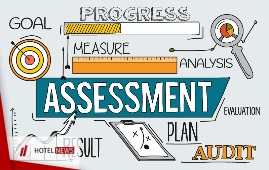
Frontline Employee Feedback and Evaluation Technique 39 Incorporate Service Assessment in Performance Evaluations; The standard form on which to complete all associates’ written performance evaluations should contain a section eval- uating customer service. For back-of-the-house employees, items such as teamwork and dependability can be addressed in this section as these items impact guest satisfaction scores. Technique 40 Mystery Shop Telephone Etiquette; Hotel associates’ telephone habits and etiquette should be shopped at least once per quarter. Are the hotel’s telephones answered promptly? Does the hotel representative identify himself/herself by name? Is the reservationist enthusiastic? Technique 41 Offer a Balance of Positive Feedback; Managers and supervisors cannot be complacent and must give constructive feedback whenever needed. Therefore, in an effort to avoid being perceived a negative or a ‘nitpicker,’ each manager or supervisor should not go home for the day without giving at least six positive pieces of feedback to associ- ates (e.g., “your shoes are nicely polished;” “I like the way you phrased that response to the guest inquiry,” etc.). Technique 42 Mystery Shop Customer Service; The hotel should use one mystery shopper guest every quarter to evaluate customer service at the various hotel/ guest points of contact. In some quarters, the mystery shopper should be disguised as a business traveler and in other quar- ters, the mystery shopper should be accompanied by a friend and be under the guise of a leisure traveler. Technique 43 Set Cross-Training Goals; In the section of the associate performance evaluation in which goals are set, all associates should have at least one goal related to being cross-trained on a new area within his/her department or in a different department. Technique 44 Allow for Self-Assigned Goals; In the section of the performance evaluation in which goals are set for the associate, s/he should be permitted to set at least one goal for himself/herself. The associate needs own- ership and buy-in on the goals.
Create: Feb 29, 2020 Edit: Aug 13, 2020 Hotel Management
TEHRAN – Japan and Austria have significantly downgraded their travel warnings on Iran, a caution they, amongst some other countries, issued following the deadly crash of a Ukrainian plane near Tehran last month. The jetliner, with 176 people onboard, was mistakenly downed on January 8 by the Islamic Revolution Guards Corps (IRGC) air defense system, a few hours after Iran fired dozens of missiles at a U.S. airbase inside Iraq in retaliation to the assassination of Iranian Lieutenant General Qassem Soleimani in Baghdad on January 3. “The Ministry of Foreign Affairs of Japan has eliminated its travel warning on Iran [asking its citizens to avoid ‘non-essential’ travel to the country] and it has also terminated depicting Iran’s security map with a warning sign,” ISNA reported on Tuesday. An advisory, which warned about traveling to Iran, is now deleted from the website of the ministry, the report added. Austrian ambassador to Tehran Stefan Scholz on Monday wrote on his Instagram account that his country has lowered its travel warning for Iran. “Austria has downgraded its travel warning for Iran, repealing its general advice against non-essential travels following a thorough reassessment of the security situation.” “We believe that the risk to Austrian nationals except for some specific border areas has changed. This decision will also further contribute to civil society contacts and commerce,” the envoy added. Late in January, the EU Aviation Safety Agency (EASA) approved that European airlines can return to parts of Iranian and Iraqi airspace. Germany’s Lufthansa was among airlines that canceled flights over the affected airspace. Inbound tours started to severely drop following the crash, triggering a major setback to Iran’s budding tourism industry. The blow, however, is being hoped to be amended as soon as possible by a comprehensive action plan Iran’s tourism ministry has put into practice since January 25. In the same time, Iran’s Minister of Cultural Heritage, Tourism and Handicrafts Ali-Asghar Mounesan issued a statement, inviting all travelers and holidaymakers to visit the ancient land, saying that the country-size guesthouse is wholeheartedly ready to receive tourists from around the world. The official emphasized that the Iranian government is trying its best to host incoming tourists by improving tourism infrastructure, offering attractive and pocket-friendly packages, as well as incentives such as visa waivers or 90-day visas on arrival. The 2019 Travel Risk Map, which shows the risk level around the world, put Iran among countries with “insignificant risk”, a category where the UK, Denmark, Switzerland, Norway, and Finland are placed in.
Create: Feb 19, 2020 Edit: Feb 19, 2020 Regional News
Anticipated openings embody the company’s commitment to setting the highest standards for guest experiences in its growing global portfolio. Four Seasons Hotels and Resorts, the world’s leading luxury hospitality company, continues to expand its global portfolio with strategic openings of new hotels, resorts and branded private residences in the world’s most desirable locations. “An unwavering commitment to service and quality, a strong operating model and alignment with hotel owners who share our vision places Four Seasons in an enviable market position as we continue to grow our portfolio and strengthen our global development pipeline,” says John Davison, President and Chief Executive Officer, Four Seasons Hotels and Resorts. “As we begin a new decade, we continue to elevate the experience for our guests and enhance our product offering, affirming our passionate dedication to excellence and the industry-leading innovation that has defined our brand for nearly 60 years.” Working in concert with its partners, each new development authentically reflects the character of the destination, envisioning new ways for travellers as well as local residents to experience the world of Four Seasons. Recent innovations have included the company’s first standalone Private Residences, fully serviced by Four Seasons, in London at Twenty Grosvenor Square; a technology-led development with Comcast in Philadelphia; the Athenian riviera conversion of the iconic Four Seasons Astir Palace Hotel Athens; and the company’s first all-inclusive wellness retreat in Hawaii. Soon, having just opened its collection of traditional chalets at the foot of the Mont d’Arbois slopes with Les Chalets du Mont d’Arbois, Megève, the company that also introduced the first private jet experience will debut its first resort with an onsite winery in Napa Valley. Planned Openings in 2020 Six new openings are anticipated for 2020, including the return of Four Seasons to Bangkok with the glorious new Jean-Michel Gathy-designed landmark along the Chao Phraya River, debuting with nearly 300 stunning guest rooms and more than 350 beautifully appointed Private Residences. Also opening in the Asia-Pacific region early in the year is a third address in Japan, in the Otemachi area of Tokyo facing the Imperial Palace Gardens. In Europe, Four Seasons will debut in Spain for the first time with a new hotel in central Madrid, an assembly of several historic buildings now fully restored and reimagined, and highlighted by a rooftop restaurant by three Michelin-starred Spanish celebrity chef Dani García. Long established as the premier luxury hospitality brand in California with seven existing locations, Four Seasons continues to expand its presence in the northern part of the state with the spring opening of its second hotel in San Francisco, a soaring building in the Embarcadero district. Also scheduled for 2020 is the highly anticipated opening of a Four Seasons resort in Napa Valley, including a unique collection of Private Residences as well as Four Seasons first on-property winery in partnership with acclaimed winemaker Thomas Rivers Brown. Also in the United States, a recently announced hotel in New Orleans is expected to open in late 2020 in the city’s historic World Trade Center. 2019 Highlights Planned openings for 2020 follow an exciting year as Four Seasons celebrated a significant number of new openings around the world in 2019, including its first entry into Greece with the rebirth of the legendary Astir Palace Hotel in Athens; and the company’s return to Montreal with a stunning and sleek new hotel in the heart of the city’s Golden Mile, featuring the opening of the restaurant MARCUS with celebrity chef Marcus Samuelsson. Additional openings included a new hotel in the Garden City of Bengaluru, its second in India; the return of the brand to Philadelphia (located within the Comcast Center, the city’s tallest building) as well as a second hotel in Boston at One Dalton Street; a third address in Mexico, this time on the pristine beaches of the East Cape of Los Cabos; the company’s first all-inclusive wellness retreat in the fully refurbished Lodge at Koele on the Hawaiian Island of Lanai; and the completion of its full suite of historic chalet offerings in the French Alpine community of Megève. Looking Further Ahead In addition to announcing new properties in San Francisco and New Orleans, Four Seasons also unveiled plans for new hotels in Okinawa, Japan; Nashville and Minneapolis, USA; Cartagena, Colombia; and a second resort in Cabo del Sol, Mexico. The company also previously announced new Four Seasons projects in Dalian, China; Makkah, Saudi Arabia; Hanoi, Vietnam; and Caye Chapel, Belize. Also in 2019, Four Seasons announced plans for a new, fully customised Four Seasons Private Jet that will continue to take luxury travel to new heights as it continues the journey first introduced in 2015. A Growing Residential Portfolio Building upon Four Seasons 35-year history in branded residential following the opening of its first Private Residence in 1985, the company continues to strategically enhance its portfolio of exclusive Private Residences in markets around the world.
Create: Feb 9, 2020 Edit: Feb 9, 2020 International News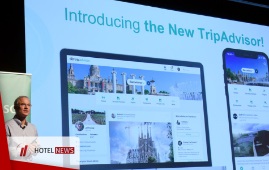
In its continued quest to help restaurants better manage their business and take control of their reputation online, Tripadvisor® launched Review Hub, a new interactive portal that allows restaurant owners to view consumer reviews of their business and quickly respond to them all from one convenient dashboard, whether the review was shared on Tripadvisor, TheFork, Google, Facebook, Yelp, or other major review sites. "Few restaurant owners have time to log into each of the various restaurant sites one-by-one to respond to their diners' reviews, so we're excited to give them one tool to manage these reviews in less time," said Bertrand Jelensperger, senior vice president of Restaurants, Tripadvisor. "Review Hub is the latest example of Tripadvisor's efforts to make online restaurant marketing and management a breeze for busy owners." How Review Hub Works Review Hub displays a snapshot of ratings and reviews from multiple platforms, and lets owners click through to explore their unique review trends in more depth — so restaurateurs can see what's working and where they can further improve their customer experience, with a complete range of reviews from multiple sites. There, they can quickly respond to each review with a thoughtful management response, thank their guests for their feedback and share their side of the story. The management response they share is then automatically posted on the site or app where the review was originally submitted by the diner, making online reputation management easier and less time consuming. Review Hub is a subscription-based product available to all restaurant owners, operators and digital marketing teams, and can be subscribed to on a monthly or annual basis, and is now available in all markets where Tripadvisor operates. The Importance of Responding Research shows that over 90% of diners say restaurant reviews matter when choosing a place to eat, showing how important it is to pay attention to what customers are saying online. Online reviews not only show the experiences of past customers, but also allow owners to show the best of a business to potential future customers looking for a place to eat. The IPSOS Mori Study, which polled over 23,000 diners worldwide, also showed that six out of ten (63%) respondents said they would be more likely to book if the owner responds to the majority of reviews. And when a restaurant owner leaves personalised responses to reviews, over three-quarters (77%) of respondents said they were more likely to book as a result. IPSOS Mori study Methodology The Power of Reviews project surveyed 23,292 Tripadvisor users across 12 markets (Australia, China, France, German-speaking, India, Italy, Japan, Singapore, Spain, Taiwan, United Kingdom, United States) between May and June 2019. The survey targeted users who had visited the site in the last 12 months. The sample is made up of Tripadvisor users who had opted into a survey panel and were invited to participate in the research via an email link directing them to an online survey platform. Ipsos MORI were involved in questionnaire design and data analysis. Results are weighted to represent the residency profile of Tripadvisor users across participating markets.
Create: Feb 9, 2020 Edit: Feb 9, 2020 International News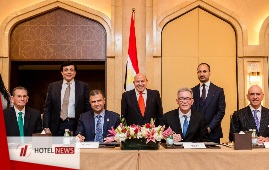
Marriott International, Inc. (NASDAQ: MAR) (www.Marriott.com) today announced that it has signed an agreement to open a St. Regis in the New Administrative Capital of Egypt, just outside of Cairo. In the second quarter of this year, The St. Regis Almasa is expected to occupy an existing luxury hotel at the entrance of the up-and-coming city that is slated to become the administrative and financial hub of Egypt. “We are delighted to be working with the National Authority for Management & Investment on this exceptional conversion opportunity to bring St. Regis to Egypt’s New Administrative Capital,” said Jerome Briet, Chief Development Officer, Middle East and Africa, Marriott International. “This signing further enhances the St. Regis brand portfolio in Middle East and Africa and underscores the tremendous momentum that our luxury brands have in the region.” Speaking on the occasion, Colonel Waleed Samy Salama, CEO, National Authority for Management & Investment commented, “The National Authority for Management and Investment is pleased to start a relationship with Marriott International. The St. Regis Almasa will be positioned as the luxury hospitality hub in the New Administrative Capital and with the largest state-of-the-art convention center in Egypt, the hotel will be the ideal host to the country’s largest events, conferences and summits. We are confident that this deal signing will play a vital role in the development of tourism in Egypt.” Also present during the signing ceremony were General Mohamed Amin Ibrahim Nasr, Advisor to the President of Egypt for Financial Affairs and Liam Brown, Group President Europe, Middle East and Africa, Marriott International. With the population of greater Cairo expected to double in the next few decades, the government in Egypt announced plans to build the New Administrative Capital. Almasa Royal Palace, which the owner has operated for the past two years, is located adjacent to a 42,000-square-foot convention center that hosts official government conventions and events, as well as official foreign presidents’ visits. The hotel consists of 270 rooms, 90 suites, 60 apartments and 14 villas. Other facilities include outdoor and indoor swimming pools, a gym, spa, club house and 20 food and beverage outlets. When it opens, The St. Regis Almasa is expected to encompass the hallmarks of the brand such as its rich traditions and rituals, and signature St. Regis Butler Service. Through a phased approach, areas across the hotel will undergo a refresh to deliver an on-brand experience in New Cairo whilst remaining open to guests.
Create: Jan 31, 2020 Edit: Jan 31, 2020 International News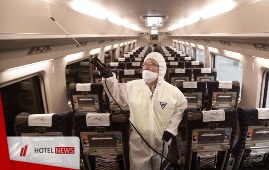
On February 15th, 2003, the first group of 67 Chinese officially travelling for leisure arrived in Germany, based on the ADS Approved Destination System agreement China and Germany signed the year before, second in Europe only to the island state of Malta, while for the rest of the Schengen Area the ADS agreement came only into force in September 2004. Your humble editor had stopped a few years earlier to be an inbound tour operator for Chinese delegations and had just finished the first semester as a tenured university professor. Witnessing the high expectations of my former colleagues, all buying coaches, employing additional staff and moving into bigger offices, I wondered if I had taken the wrong decision to opt out of the business just before the biggest bonanza ever for the German China inbound tour operators, looking forward to enjoying a year without competition in Europe. Unknown at the time, in November 2002 SARS (severe acute respiratory syndrome) started in Guangzhou and spread to many countries in the world. On March 15th, 2003, the WHO issued a global alert about a new infectious disease, advising against any unnecessary travel to and from East Asia. On April 2nd, Chinese officials finally began reporting the severity and extent of the SARS outbreak. As a result the second quarter of 2003 saw almost no Mainland Chinese citizen arriving in Germany, pushing several inbound tour operators close to bankruptcy. For the whole year, the number of arrivals however reached the level of 2002, and 2004 saw an increase of almost 40%, as many of the trips to Germany influenced by the SARS crisis were only postponed, not cancelled. Globally the same happened: From 16.6 million in 2002 the number of outbound trips jumped to 20.9 million in 2004 despite the three-month hiatus. With the yet not fully named 2019-nCoV, things could turn out in a similar way, based on what is known until now. On the one hand the disease is spreading much faster, given the much improved domestic and international transport infrastructure available in comparison to 2003, on the other hand the Chinese government reacts in a much different way to the crisis. Among many others, starting from the 27th of January, all group travel from China has to cease. Individual travellers however will have a bigger incentive than before to go abroad. The biggest difference is clearly the fact that in 2003 outbound tourism was the least concern except for those few directly involved during the SARS crisis. In 2020 there are already articles published discussing the fate of the tourism industry of Thailand, Japan and other countries if the main source market China implodes. Via an open letter of the CATS China Association of Travel Services published on the 26th, the international partners have been asked to “introduce relative refund and changes policies to minimize Chinese tourists financial loss”. How much this will remain a wish or will become a demand, is one of the many unknown factors in the 2019-nCoV development. The main concern remains of course to minimize the loss of life in China. In all previous cases, being it SARS, MERS or the Lehman Brothers global economical crisis, demand bounced back stronger than before after two or three months. So it will be a good idea to use the time of the slowdown to train everybody involved in servicing Chinese customers, using the brand new CTT China Tourism Training. Let’s hope that the Year of the Rat will have a better ending than this dire beginning and that all our readers, their colleagues, family and customers will stay healthy.
Create: Jan 31, 2020 Edit: Jan 31, 2020 International News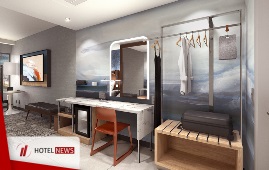
Hilton launched Tempo by Hilton, an approachable lifestyle brand curated to serve a growing segment of 'modern achievers' who seek a hotel experience that reflects their ambition. By combining thoughtful design and diverse lifestyle partnerships, Tempo by Hilton provides hotel owners and developers with a highly scalable brand that is both uplifting and within reach for future guests – all powered by an efficient service model. “For more than 100 years, Hilton has pioneered the hospitality industry as we know it,” said Christopher J. Nassetta, president & CEO, Hilton. “Tempo by Hilton is the latest example of our unique ability to anticipate what our guests are looking for and deliver unmatched value for customers and owners alike. We’re thrilled to welcome this new brand to our Hilton family and look forward to building on our legacy of innovation with Tempo by Hilton.” As part of its commitment to helping guests live better lives, Tempo by Hilton has established and built upon partnerships with leading experts across the well-being, food and beverage and other lifestyle spheres. The experts on board include Arianna Huffington’s renowned behavior change platform, Thrive Global and established culinary firm, Blau + Associates. These organizations bring a sense of discovery to the brand, while empowering guests to continue prioritizing well-being and personal growth even while traveling. “Tempo by Hilton introduces a new concept by combining all the benefits and efficiencies owners expect from a limited service model with an uplifting dose of inspiration,” said Phil Cordell, SVP and global head of new brand development, Hilton. “Utilizing a data-driven blueprint, we identified lifestyle offerings inside the guest rooms and throughout the property that push the entire sector to new heights. The end result is a compelling, yet approachable brand that enables owners to expand their portfolios in sought-after locations across the country as well as capture a new demographic of travelers.” Guided by its various lifestyle partnerships, as well as exhaustive market research surveying more than 10,000 consumers, each Tempo by Hilton property will feature elements designed to help ambitious guests continue their journey without disrupting their routine. These signature elements include: Reinvigorating and Relaxing Guest Rooms: More than rooms, Tempo by Hilton accommodations serve as a refuge where modern travelers are reinvigorated for the day ahead. In-room experiences include the one-of-a-kind Power Up and Power Down collections; curated assortments of morning and bedtime rituals created in partnership with Thrive Global; as well as other unexpected touches, such as a finely tuned sleep environment and a dedicated Get Ready Zone with space to get ready, organize for the day and focus on work. In addition, the oversized bath suite, which includes mirrors with built-in Bluetooth speakers, is spacious, bright and invigorating to help guests recharge and renew. Shared Spaces and Amenities Designed to Inspire: Envisioned as catalysts for genuine, memorable experiences, all Tempo by Hilton public areas and amenities bring a fresh approach to industry mainstays. These include art and design collections specifically chosen to encourage guests to look up from their daily grind and take a moment for themselves. Guests will also enjoy state-of-the-art fitness offerings; flexible meeting spaces, which can be easily reserved by guests on the go; as well as more informal areas perfect for collaborating with teammates or concentrating on individual tasks. Culinary Journeys: Developed alongside the award-winning Blau + Associates, Tempo by Hilton’s food and beverage offerings ensure guests have access to everything they need to sustain energy and boost focus. The in-lobby Fuel Bar, a complimentary coffee and tea bar, offers a hand-selected assortment of premium coffees and teas, along with various benefit-driven mix-ins. Additional hearty and healthy options, including artisanal smoothies and other breakfast favorites, are available at the casual cafe. At the bar, spirited and non-spirited craft cocktails and small plates round out the concept’s culinary program. Additionally, Blau + Associates will collaborate with Hilton to form a Chef Collective, an advisory board of young up-and-coming chefs who will help curate seasonal menus. Sustainability: Tempo by Hilton aligns with Hilton’s Travel with Purpose 2030 Goals to double its investment in social impact and cut its environmental footprint in half. To that end, this new brand is committed to implementing sustainable practices throughout the guest experience. Examples of specific initiatives include LightStay, food waste programs, responsible seafood sourcing, hydration stations throughout the property to replace single-use plastic bottles and full-size bath amenity dispensers to reduce disposable plastics.
Create: Jan 31, 2020 Edit: Jan 31, 2020 International News
